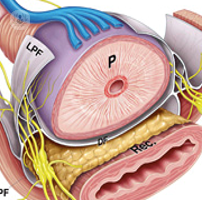Laparoscopic radical prostatectomy: treatment for prostate cancer
Written by:The prostate gland is an exclusive man, located below the bladder, surrounding the urethra and in direct contact with the sphincter muscle. Generally, the tumor develops in the prostate periphery at an early stage and no symptoms. If life expectancy is more than ten years it is likely that the tumor grow, breaking the prostatic capsule and infiltrate the bladder neck and can develop metastases.
 For this reason, you should diagnose the tumor earlier with some therapeutic alternatives, including radical prostatectomy is. A treatment that has proven more effective in the long term.
For this reason, you should diagnose the tumor earlier with some therapeutic alternatives, including radical prostatectomy is. A treatment that has proven more effective in the long term.
What is the procedure?
The procedure involves the dissection of the prostate adjacent structures. We should note that to preserve the sphincter muscle (allows the passage of a substance from one organ to another) for the successful recovery of postoperative continence. The surgical procedure will require general anesthesia. Later, it proceeds to sew the bladder to the urethra to the correct output of urine and a urethral catheter that the patient should take 7 to 10 days is used.
Laparoscopic techniques allow the procedure with 5 holes 5 and 10 mm, resulting in less postoperative pain and earlier discharge. In cases where there is a small amount of cancer and tumors of low or medium aggressiveness, as long as the patient is concerned, you can perform surgery with preservation of neurovascular bundles (arterial and nerve cords around the prostate). Allowing the patient with high probability recover their erections after a rehabilitation program.
Similarly if the patient is not sexually active, powerless or not interested in sexual activity nerves adjacent to the prostate cancer resecaran for greater security.
Potential Risks
Complications of radical prostatectomy reside in the anatomical position of the prostate and the difficulty of separating the prostate without damaging neighboring organs. However, these complications occur in a small percentage of patients and, even less, if they have a good team of surgeons with extensive experience.


